As an AC technician or AC user, you understand the importance of properly maintaining air conditioning systems for the comfort and health of your customers.
One critical aspect of this maintenance process is removing contaminants or moisture that may have accumulated in the AC lines. Purging AC lines with Nitrogen is a highly effective method for achieving this goal. Nitrogen is an inert gas readily available and readily usable in the HVAC industry.
It is commonly used for purging air conditioning systems because it is dry, non-reactive, and non-toxic. Purging with Nitrogen can remove moisture, reduce pressure, and prevent contamination in the AC lines.
Here, we will provide you with a step-by-step guide on how to purge AC lines with Nitrogen. We will also discuss the benefits of this process and the tools and equipment you will need to perform it.
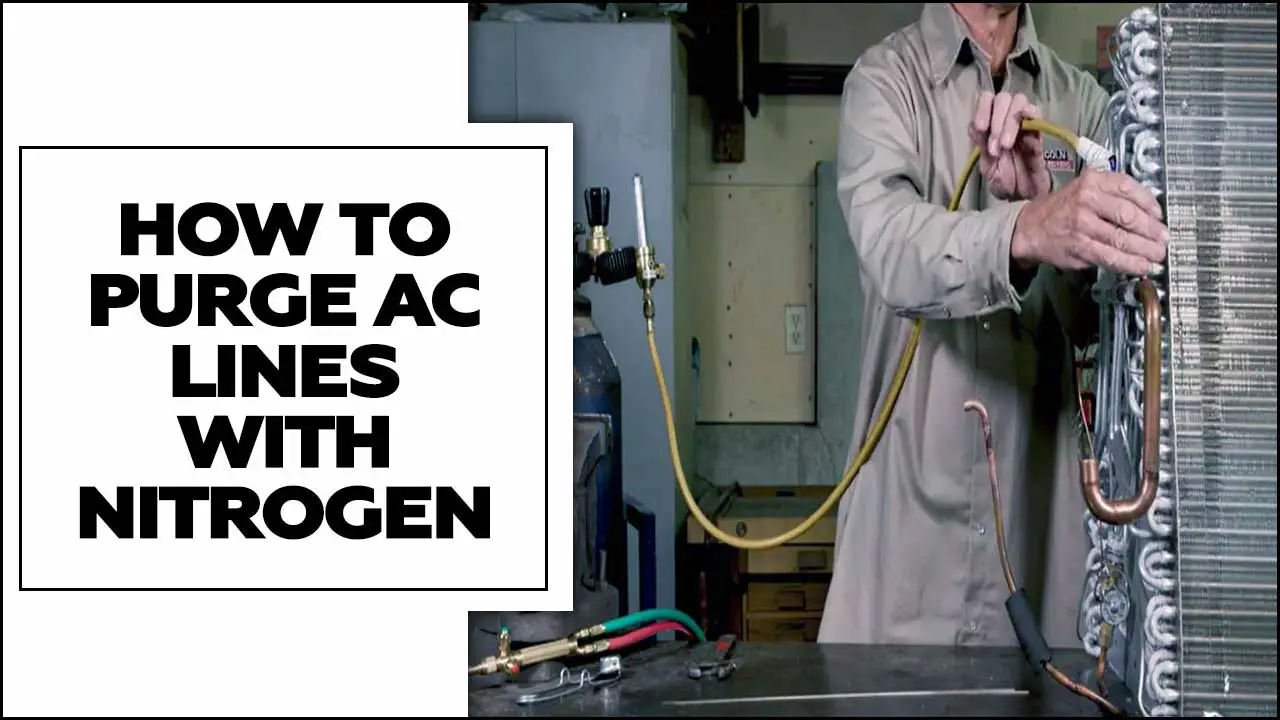
What Is Nitrogen, And Why Use It For Purging Ac Lines?
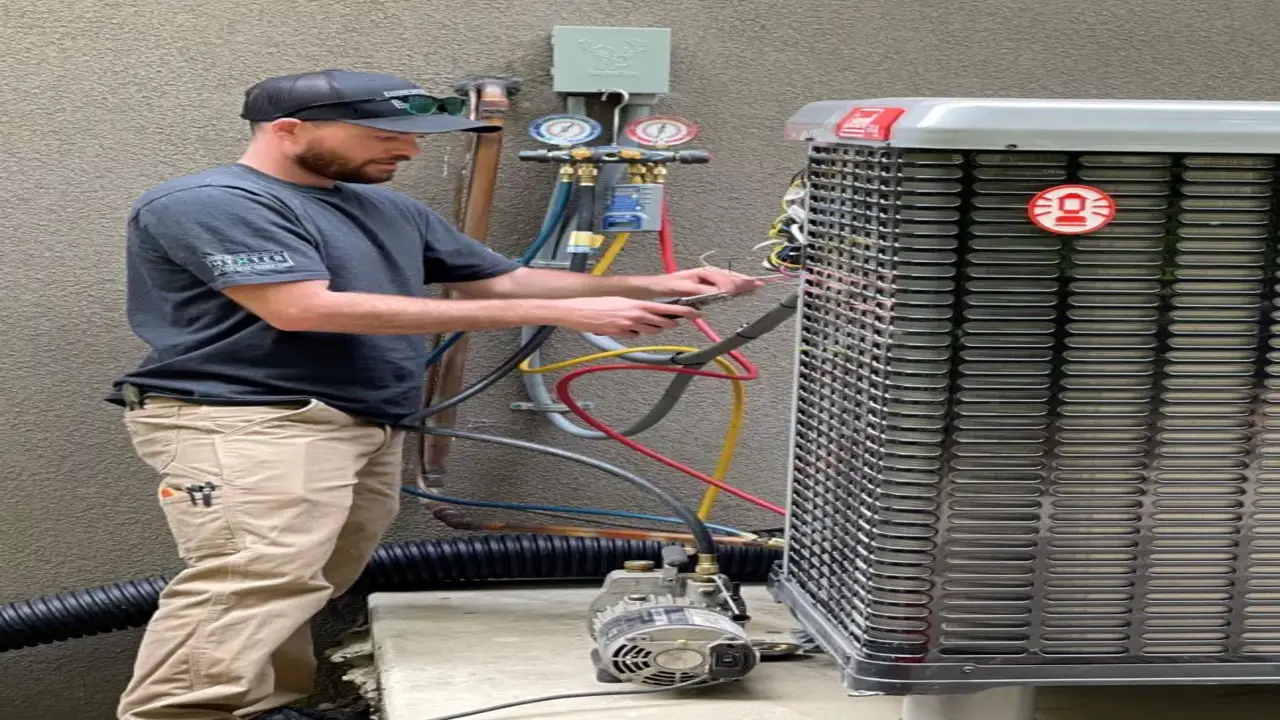
Nitrogen is an inert gas that is commonly handy for purging AC lines. When AC lines are installed or repaired, removing moisture or air from the system is important to prevent damage and ensure optimal performance.
Nitrogen is used for this purpose because it is dry and non-reactive, which means it will not react with the refrigerant or other components in the system. Nitrogen can be pressurized and used to detect leaks in the system. By pressurizing the AC lines with Nitrogen, condenser service valve technicians can check for leaks using a specialized detector.
This helps to ensure that the system is free of leaks before it is charged with a refrigerant compressor. Overall, Nitrogen is a valuable tool for purging AC lines and maintaining the performance and longevity of HVAC systems. Using Nitrogen during installation and repair, technicians can help ensure AC systems function at their best.
Equipment And Supplies Needed For Purging AC lines With Nitrogen
To purge AC lines with nitrogen, you will need the following equipment and supplies. By having these equipment and supplies ready, you can effectively purge AC lines with nitrogen, ensuring that they are clean and free from contaminants.
- Nitrogen tank
- Regulator
- Tubing and fittings
- Pressure gauge
- Safety goggles and gloves
- Wrenches or pliers
Safety Equipment
Purging your home of air toxins can be challenging and often scary, but with the proper safety equipment, it can be done safely and efficiently. While purging is not always necessary – for example, if you’ve lived in your home for many years without any issues – it’s always wise to do it as part of an overall preventive maintenance plan.
That way, you’ll catch any potential problems early on and take corrective action before they become more significant catastrophes. To make the purge process as smooth as possible:
- Keep an eye on your AC unit during its purging cycle.
- Ensure all hoses and components are correctly connected; otherwise, damage may occur.
- Wear proper respiratory protection when filling or using nitrogen gas tanks (the toxic gas used in purges).
How To Purge Ac Lines With Nitrogen – Step-By-Step Guide
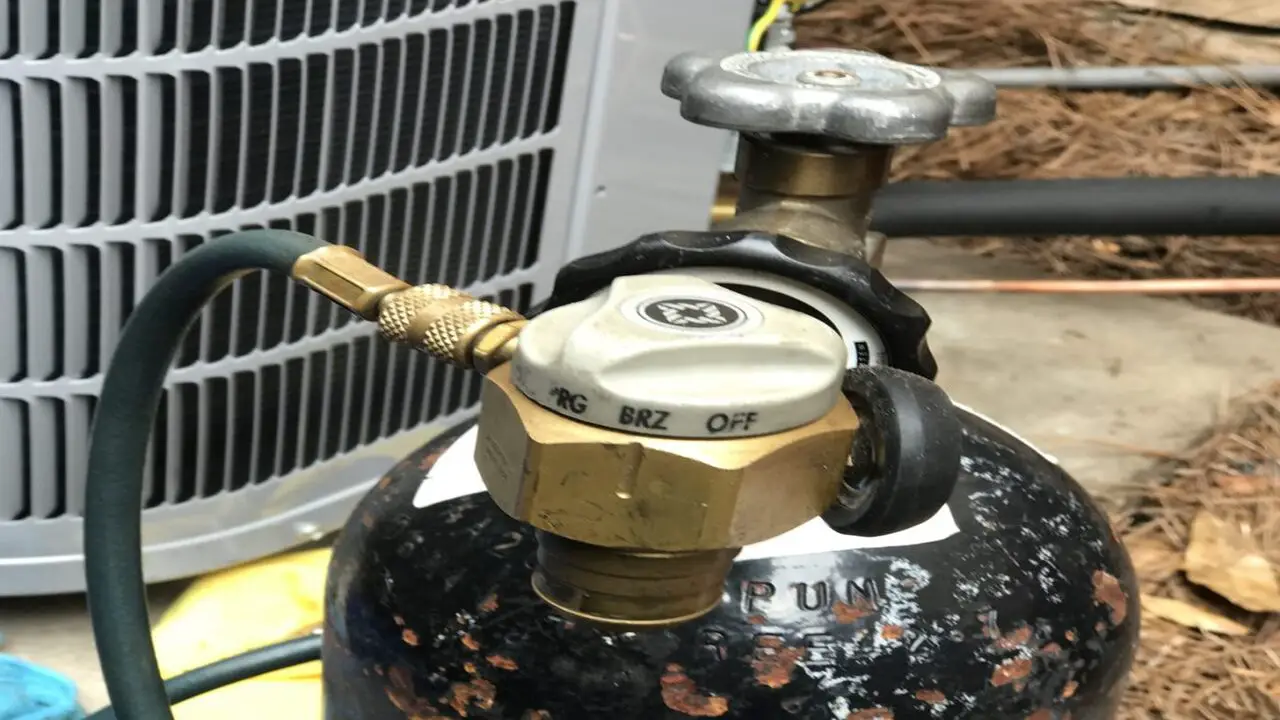
Purging AC lines with Nitrogen is an important step in HVAC maintenance. By removing any moisture or contaminants from the lines, you can help ensure optimal performance and prevent potential damage to the system. Purging AC lines with Nitrogen is crucial in installing and maintaining air conditioning systems. Nitrogen removes any moisture, contaminants, or air trapped in the refrigerant lines, ensuring the system operates optimally. Here is a step-by-step guide on how to purge AC lines with Nitrogen:
Preparing The Area
Before purging AC lines with Nitrogen, preparing the work area properly is important. This will help ensure the safety and efficiency of the procedure. Here are some steps to follow when preparing the area for purging AC lines with Nitrogen:
- Remove any old insulation, drywall, and pipes before installing the Nitrogen.
- Wait until the Nitrogen starts burning before removing the material – this will help prevent an accidental fire in situ.
- Spread a layer of Nitrogen over the area and light a match – make sure there is no obstruction anywhere in sight! Once it starts burning, remove all combustible materials quickly with firefighters on standby should anything go wrong during the installation or while using your furnace afterwards.
Putting Up The Purge System
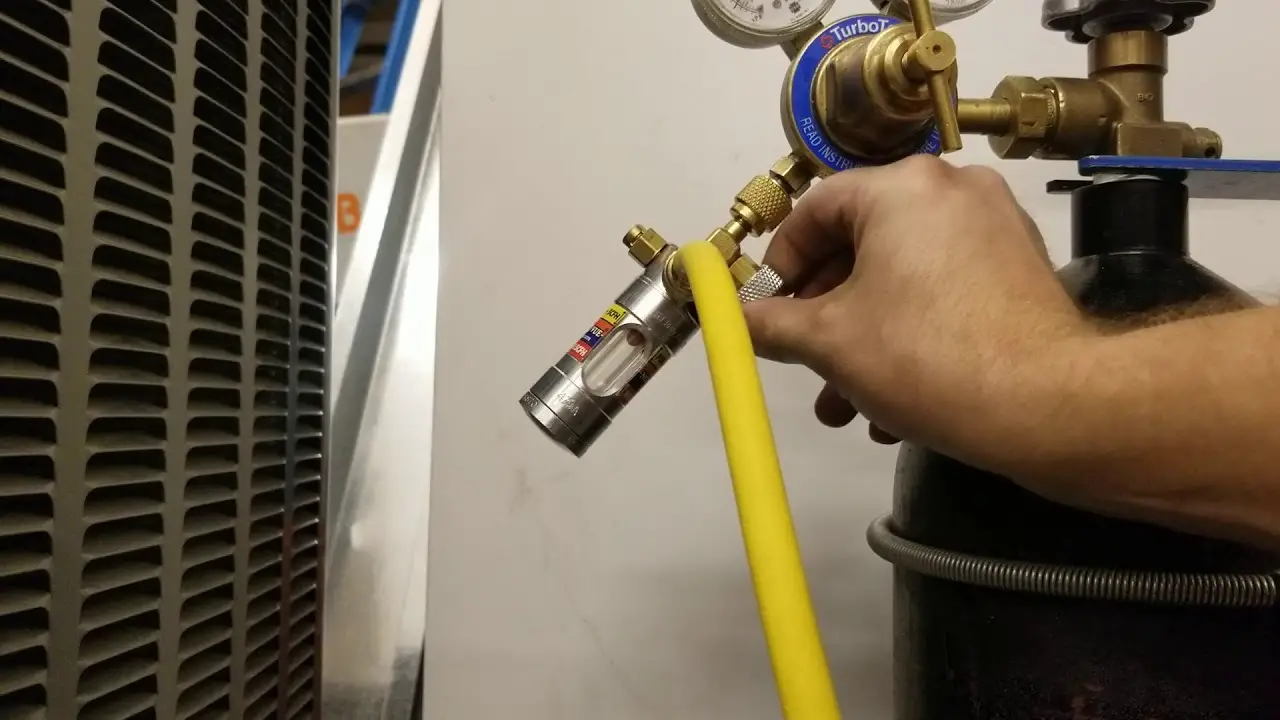
You must have a purge system to purge AC lines with Nitrogen. This system has specific designs to remove any air or moisture from the lines before introducing the nitrogen gas, which helps to prevent damage to the AC components. You will need a nitrogen tank with a pressure regulator and a flow meter to set up the purge system. Purge systems are a great way to clean your home of unhealthy air particles. Here are the steps:
- Start by turning off the leading electricity to your home.
- Connect the purge system to a nitrogen tank and turn on the gas supply.
- Leave the system for about 10 minutes while you get a nitrogen-filled cylinder.
- Once it’s complete, turn off the gas supply and switch on the leading electricity to your house. The purges will help clear out all harmful air particles in just minutes.
Filling The System With Nitrogen
Filling an AC system with Nitrogen can be an effective way to purge the lines of any moisture or contaminants before adding refrigerant. Here are some steps to follow when filling the system with Nitrogen:
- Connect the nitrogen tank to the AC system using a pressure regulator and a hose.
- Set the pressure regulator to a low pressure (around 50 PSI) and slowly discharge valve on the nitrogen tank.
- Allow the Nitrogen to flow through the lines for several minutes until you hear a hissing sound, indicating that all the air has been pushed out.
- Close the valve on the nitrogen tank and disconnect it from the AC system.
- A vacuum pump removes any remaining moisture from the lines before adding refrigerant.
Filling an AC system with Nitrogen can help to ensure that it is free of contaminants and ready for optimal performance. By following these steps, you can help ensure that your AC system runs at its best, providing cool and comfortable air throughout your home or business.
Purify The Nitrogen Line
Purifying the nitrogen line is essential in ensuring the quality and purity of nitrogen gas used in various industrial applications. Here’s how to purify the nitrogen line:
- Install A Nitrogen Purifier: A nitrogen cleaner can remove impurities such as moisture, oxygen, and hydrocarbons from the nitrogen gas.
- Use A Desiccant Dryer: A desiccant dryer can remove moisture from the nitrogen gas by passing it through a bed of drying agents such as silica gel or activated alumina.
- Install Filters: Liquid line filter can be installed in-line to remove particulate matter and other impurities from the nitrogen gas.
- Monitor Purity: Regularly monitor the purity of the purified nitrogen gas using appropriate equipment, such as a gas chromatograph or mass spectrometer, to ensure that it meets the required specifications. Following these steps ensures that your nitrogen line is purified and ready for use in various industrial applications.
Connect The Nitrogen Tank To The AC Line
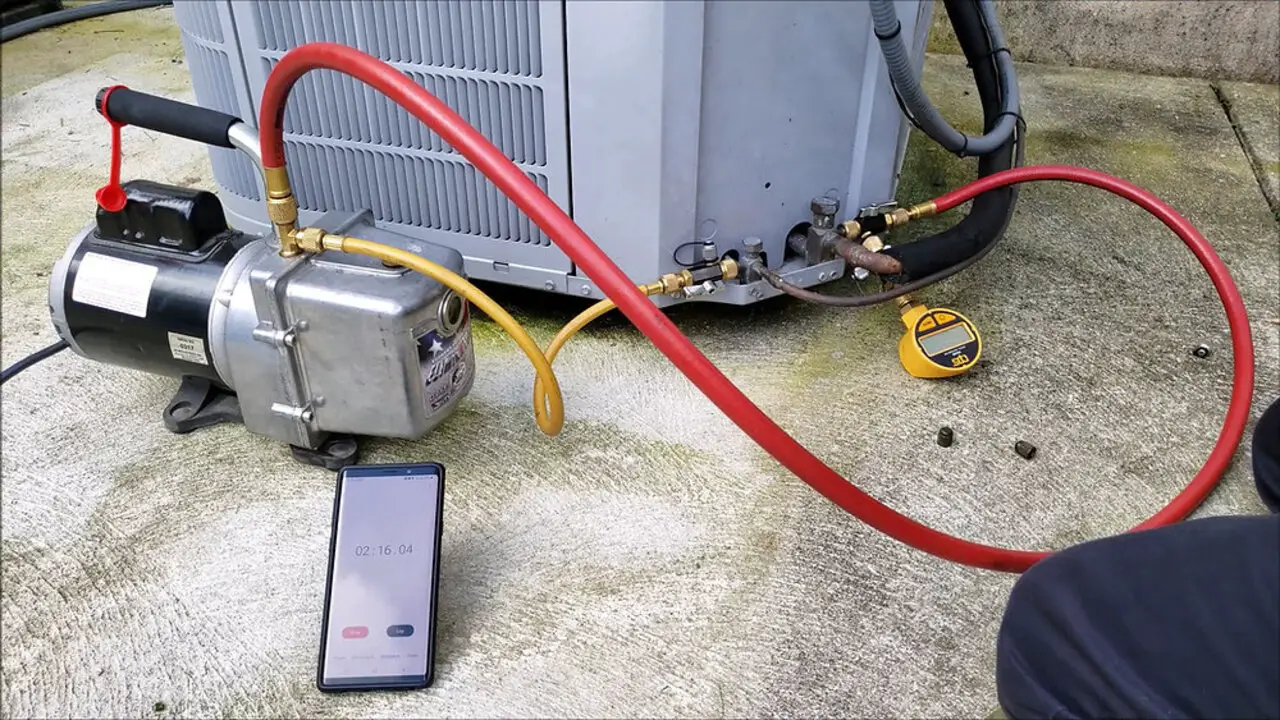
Connecting a nitrogen tank to an AC line is important in maintaining and repairing air conditioning systems. To do this, you must first locate the access port on the AC line and remove the cap. Next, attach the regulator to the nitrogen tank and set the pressure to around 150 psi.
Connect the hose from the regulator to the access port on the AC line and open up the valve on the nitrogen tank. This will allow nitrogen gas to flow into the system and help flush out any contaminants or moisture that may be present. Once you have finished using the nitrogen tank, close the valve and disconnect it from the AC line to prevent leaks or damage.
Monitor Pressure And Temperature
It’s also important to monitor pressure and temperature constantly; high pressure can cause AC lines to burst, and low temperatures can lead to frostbite or hypothermia, so be safe by following all safety procedures religiously!
Keeping a bucket of water vapor beside the AC line in an emergency is always a good idea. And if purging your AC line isn’t an option, wear gloves to avoid skin irritation. Remember – no matter how inconvenient purging may seem, taking precautionary measures is always better before something goes wrong.
What Are The Advantages Of Purging An AC Line With Nitrogen?
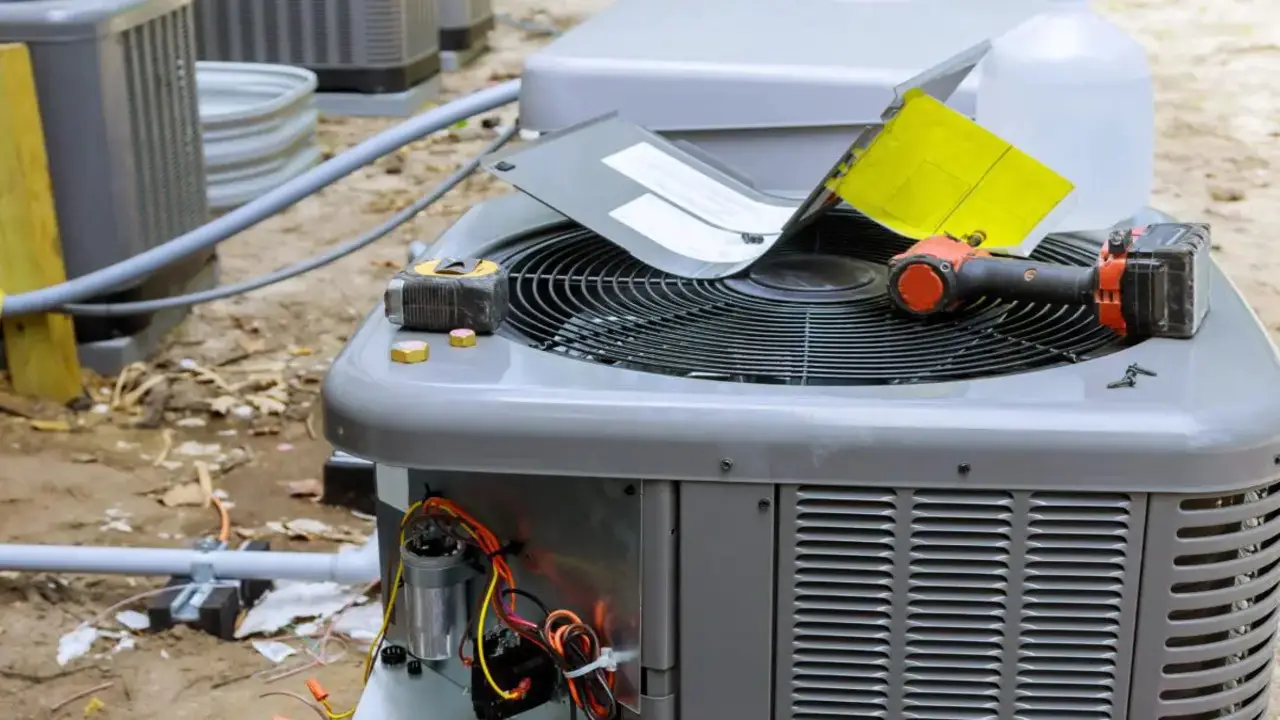
As the weather starts to warm up, so do the chances of your AC unit experiencing problems. One of the most common culprits is a build-up of condensation build-up on the AC unit. This happens when the humidity in the air condenses and forms tiny droplets on the refrigerant lines. Here are the advantage:
- Prevents oxidation and corrosion
- Reduces the risk of refrigerant contamination
- Enhances system efficiency
- Minimizes potential system damage
- Ensures accurate readings during pressure testing
- Improves overall system performance
Safety Precautions When Working With Nitrogen
When purging AC lines with Nitrogen, it is important to take certain safety precautions. First, always use a nitrogen regulator to control the nitrogen flow from the cylinder. This will help prevent over-pressurization and ensure a controlled release of Nitrogen into the AC lines. Additionally, ensure you are using dry Nitrogen, as moisture can cause damage to the AC system.
It is also crucial to carefully handle the nitrogen cylinder and secure it upright to prevent any potential accidents or leaks. Lastly, always wear appropriate personal protective equipment, such as gloves and safety goggles, when working with Nitrogen under pressure. Following these safety precautions, you can safely and successfully purge your AC lines using Nitrogen.
Common Mistakes To Avoid During The Purging Process
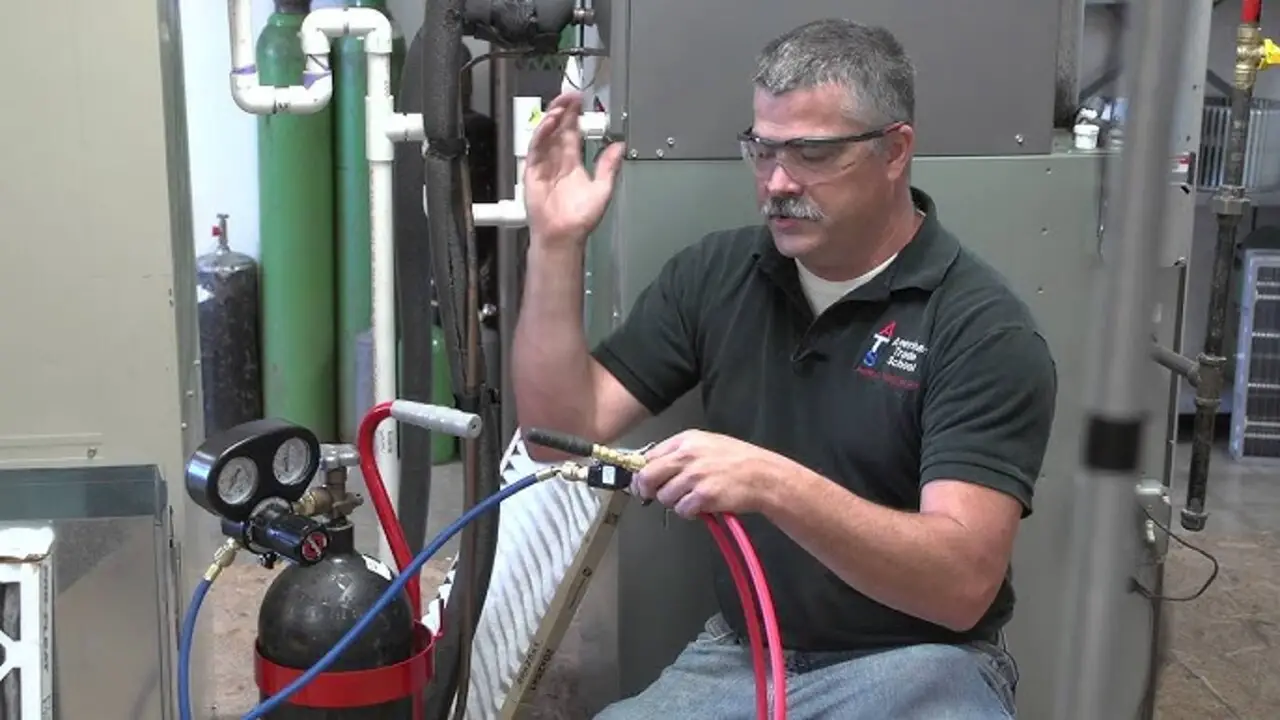
When purging AC lines with Nitrogen, it is important to avoid common mistakes that can compromise the effectiveness of the process. One common mistake is not using the proper flushing equipment or tools for purging. It is essential to use a high-quality nitrogen regulator and gauge to ensure accurate pressure control and monitoring.
Another mistake is rushing the purging process. Purging AC lines requires patience and thoroughness to ensure all contaminants are removed. The time to purge each line properly will lead to better performance and efficiency of the AC system. Finally, monitoring the nitrogen flow rate during the purging process is crucial.
A flow rate that is too high can cause turbulence and fail to effectively remove contaminants, while a flow rate that is too low may prolong the purging process unnecessarily. By avoiding these common mistakes, you can ensure a successful and efficient purging of your AC lines with Nitrogen.
Tips For Maximizing The Effectiveness Of Nitrogen Purging
To maximize the effectiveness of nitrogen purging. Nitrogen purging is a process that involves the removal of oxygen and other impurities from a system or container by replacing them with nitrogen gas. By following these tips, you can maximize the effectiveness of nitrogen purging and ensure that your AC lines are properly cleaned and ready for use. Follow these tips:
- Use a nitrogen bottle or tank specifically designed for purging AC lines. This will ensure that you have a clean and reliable source of tank of Nitrogen.
- Before starting the purging process, ensure the AC lines are properly sealed, and all connections are secure. This will prevent any leaks during the purging process.
- Connect the nitrogen bottle or tank to the AC lines using the appropriate fittings and hoses. Make sure that all connections are tight and leak-free.
- Slowly open the nitrogen bottle or tank valve to allow a controlled nitrogen flow into the AC lines. This will help to prevent any sudden pressure surges or damage to the system.
- As you purge the AC lines with Nitrogen, monitor the pressure gauges to ensure they stay within a safe range. If the pressure exceeds recommended levels, reduce or stop the nitrogen flow until it stabilizes.
- Continue purging the AC lines with Nitrogen until all contaminants and moisture have been removed. This may take several minutes or longer, depending on the size of the system.
Maintenance Tips For Keeping AC Lines Clean And Efficient
Maintaining clean and efficient AC lines is crucial for the optimal performance of your air conditioning system. One effective method to achieve this is by purging the AC lines with Nitrogen. Purging with Nitrogen helps to remove any moisture, contaminants, or debris from the lines, which can hinder the system’s efficiency and lead to potential issues. To purge AC lines with Nitrogen, follow these maintenance tips:
- Safety First: Before beginning the purging process, ensure that you have proper safety equipment, such as gloves and goggles, to protect yourself from any potential hazards.
- Connect The Nitrogen Tank: Attach a pressure regulator to the nitrogen tank and connect it to the service valve on your AC unit.
- Open Valves: Open both the high-pressure and low-pressure service valves on your AC unit to allow nitrogen flow.
- Purge The Lines: Let the nitrogen flow through the system for several minutes to purge any contaminants or moisture from the AC lines.
- Monitor Pressure: Monitor the pressure gauge throughout the process to ensure it remains within safe limits.
- Close Valves: Once you’ve completed purging, close both service valves on your AC unit and disconnect the nitrogen tank.
Regularly purging AC lines with Nitrogen can help prevent clogs, reduce corrosion, and extend the lifespan of your air conditioning system. You should consult a professional HVAC technician for guidance if you are unsure about performing this maintenance task yourself.
Conclusion
Purging AC lines with nitrogen is a crucial step in ensuring the efficiency and effectiveness of your air conditioning system. By removing any moisture, contaminants, or air from the lines, you can prevent potential damage and ensure optimal performance.
The process may seem complex, but by following the steps on how to purge AC lines with nitrogen, you can easily purge your AC lines with nitrogen and enjoy a well-functioning AC system. Remember to take all necessary safety precautions and consult a professional if you are unsure about any aspect of the process. With proper purging, you can extend the lifespan of your AC system and maintain a comfortable indoor environment.
Frequently Asked Questions
1.Why Is Nitrogen Good For Purging?
Ans: Nitrogen is good for purging because it is an inert gas that does not react with other substances. This makes it ideal for displacing oxygen and other gases from a confined space, such as during the purging of copper pipe lines or storage tanks.
2.What Is The Process Of Purging?
Ans: Purging is the process of removing unwanted or unnecessary items, substances, or emotions. It can refer to physical purging, such as cleaning or decluttering, or to emotional purging, such as releasing negative thoughts or feelings.
3.What Is The Procedure For Nitrogen Purging Of Pipelines?
Ans: The nitrogen purging of pipelines involves introducing nitrogen gas into the pipeline to displace any existing air or other gases. This is done to create an inert atmosphere and prevent the formation of flammable or explosive mixtures during maintenance or commissioning activities.
4.How Much Nitrogen Is Needed For Purging?
Ans: The amount of Nitrogen needed for purging depends on the specific application and the volume of the purged system. Generally, a minimum nitrogen flow rate of 50-100 cubic feet per hour is often sufficient for most purging processes.
5.Can You Nitrogen Purge?
Ans: Yes, Nitrogen can be used for purging purposes. Nitrogen is an inert gas widely used in various industries for purging and inerting applications. It is commonly used to displace oxygen and moisture from vessels, pipelines, and storage tanks to create an oxygen-free or moisture-free environment.

I am passionate about home engineering. I specialize in designing, installing, and maintaining heating, ventilation, and air conditioning systems. My goal is to help people stay comfortable in their homes all year long.
